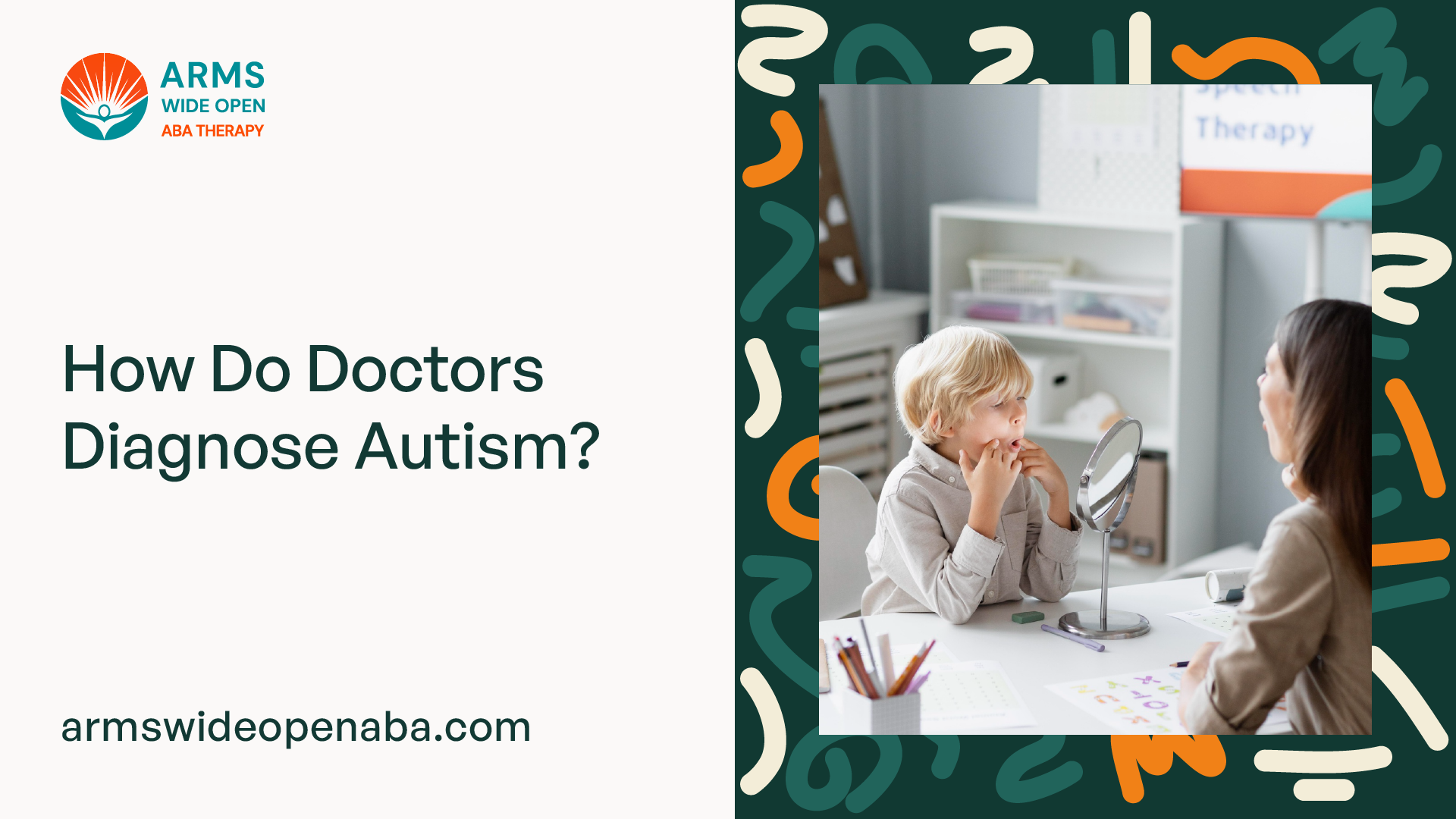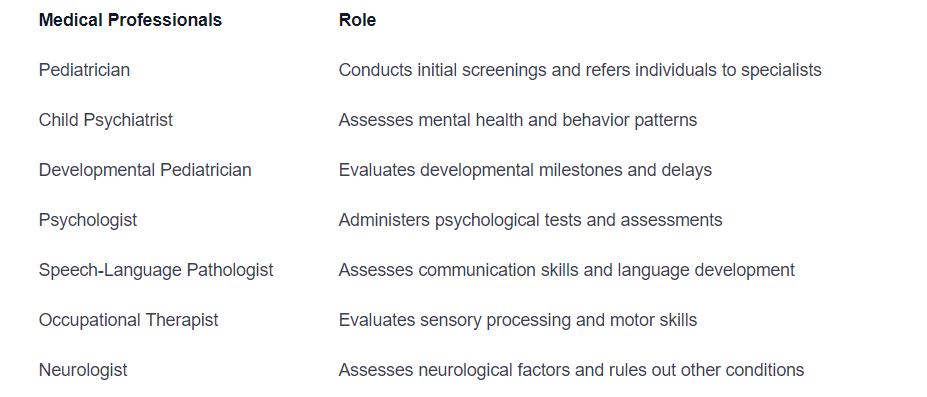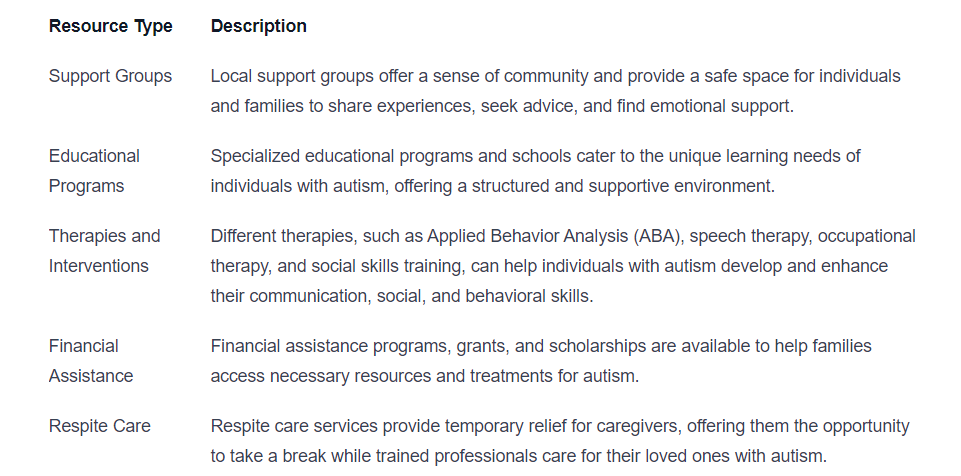How Do Doctors Diagnose Autism?
Discover how doctors identify autism through a collaborative approach. From assessments to support, learn the diagnostic process today!

Understanding Autism
Autism is a complex neurodevelopmental disorder that affects individuals in various ways. Understanding the fundamental aspects of autism is crucial in the diagnostic process and providing appropriate support. This section will explore what autism is and the signs and symptoms associated with it.

What is Autism?
Autism, also known as Autism Spectrum Disorder (ASD), is a lifelong condition that affects a person's social interaction, communication, and behavior. It is characterized by a wide range of symptoms and challenges, which can vary from one individual to another.
Autism is considered a spectrum disorder because it encompasses a broad range of presentations and severity levels. Some individuals with autism may have significant impairments in multiple areas, while others may have milder symptoms and excel in certain areas.
Signs and Symptoms of Autism
The signs and symptoms of autism typically emerge early in childhood and may become more noticeable as the child grows. It's important to note that the presence of one or a few of these signs does not necessarily indicate autism. However, if multiple signs persist and are significantly impacting a child's development, it is recommended to seek a professional evaluation.
Here are some common signs and symptoms associated with autism:

It's important to remember that each individual with autism is unique and may exhibit a combination of different symptoms. If you suspect that your child or someone you know may have autism, it is recommended to consult with a healthcare professional who specializes in autism diagnosis and treatment.
Understanding the basics of autism, including its definition and common signs and symptoms, is a crucial starting point in the diagnostic process. By recognizing these indicators, individuals and their loved ones can take appropriate steps to seek a comprehensive evaluation and access the necessary support and resources.
The Diagnostic Process
When it comes to diagnosing autism, doctors follow a comprehensive process that involves early detection and a multidisciplinary evaluation.
Importance of Early Detection
Early detection of autism is crucial for ensuring that children receive timely intervention and support. The earlier autism is identified, the sooner appropriate therapies and interventions can begin. Early detection allows for targeted interventions that can help improve communication, social skills, and overall quality of life for individuals with autism.
Multidisciplinary Evaluation
The diagnostic process for autism involves a multidisciplinary evaluation conducted by a team of professionals from various fields. This collaborative approach ensures a comprehensive assessment of the individual's behavior, development, and overall functioning.
The team may include professionals such as:
- Pediatricians: Pediatricians play a significant role in the early detection and diagnosis of autism. They often conduct initial screenings and refer individuals for further evaluations if necessary.
- Child Psychiatrists/Psychologists: Child psychiatrists and psychologists specialize in diagnosing and treating mental health conditions in children. They use specific assessment tools and conduct interviews to evaluate the presence of autism.
- Speech-Language Pathologists: These professionals assess communication skills, language development, and social communication abilities in individuals with suspected autism.
- Occupational Therapists: Occupational therapists evaluate sensory processing, motor skills, and daily living skills to determine if they are affected by autism.
- Developmental Pediatricians: Developmental pediatricians specialize in diagnosing and managing developmental conditions in children. They assess overall development and behavior to determine if autism is present.
A multidisciplinary evaluation involves a combination of interviews, observations, and standardized assessments. These assessments help identify the presence of autistic traits and behaviors, allowing healthcare professionals to make an accurate diagnosis.
By bringing together a team of professionals with different areas of expertise, the diagnostic process can provide a comprehensive understanding of an individual's strengths, challenges, and specific needs related to autism.
Early detection and a multidisciplinary evaluation are key components of the diagnostic process for autism. Through this approach, doctors can accurately identify autism and create an appropriate treatment plan tailored to the individual's unique needs.
Diagnostic Criteria
To accurately diagnose autism, doctors rely on specific criteria outlined in the Diagnostic and Statistical Manual of Mental Disorders (DSM-5). This manual provides a standardized set of guidelines that medical professionals use to identify and diagnose autism spectrum disorder (ASD). Let's take a closer look at the DSM-5 criteria and the traits and behaviors commonly associated with autism.
Diagnostic and Statistical Manual of Mental Disorders (DSM-5)
The DSM-5 is a widely recognized diagnostic tool used by healthcare professionals to classify and diagnose various mental disorders, including autism. Developed by the American Psychiatric Association, it provides a comprehensive framework for understanding and diagnosing ASD.
According to the DSM-5, the diagnostic criteria for autism include persistent deficits in two main areas: social communication and social interaction, as well as restricted, repetitive patterns of behavior, interests, or activities. To receive an autism diagnosis, an individual must exhibit these symptoms early in childhood, even if they become more apparent as they grow older.
Autistic Traits and Behaviors
Autism is a complex disorder that manifests in a variety of ways. While each individual with autism is unique, there are certain traits and behaviors commonly associated with the condition. These include:
- Social Communication and Interaction Deficits: Individuals with autism may struggle with understanding and using verbal and nonverbal communication. They may have difficulty maintaining conversations, understanding social cues, and engaging in reciprocal social interactions.
- Restricted and Repetitive Behaviors: People with autism often exhibit repetitive behaviors, such as hand-flapping, rocking, or repetitive speech. They may also develop specific routines or rituals and have intense, narrow interests.
- Sensory Sensitivities: Many individuals with autism experience heightened sensitivities to sensory stimuli, such as noise, lights, or textures. They may be overwhelmed by certain sensory experiences or seek out specific sensory inputs.
- Challenges with Flexibility and Change: People with autism may struggle with transitions and changes in routine. They often prefer predictability and may become anxious or upset when faced with unexpected changes.
It's important to note that not all individuals with autism will display the same behaviors or exhibit all of these traits. The severity and combination of symptoms can vary widely from person to person.
By considering the diagnostic criteria outlined in the DSM-5 and observing the presence of autistic traits and behaviors, doctors can make an accurate diagnosis of autism. This diagnosis serves as a starting point for individuals and their families to access the support, resources, and interventions needed to navigate the challenges and maximize the potential of those with autism.
Assessments and Screening Tools
When it comes to diagnosing autism, doctors rely on a combination of assessments and screening tools to gather comprehensive information about an individual's developmental and behavioral patterns. These tools assist in identifying potential signs of autism and play a crucial role in the diagnostic process. Two commonly used methods are developmental screening and comprehensive diagnostic evaluations.
Developmental Screening
Developmental screening is the initial step in identifying potential developmental delays or concerns. It is a brief assessment that helps healthcare professionals determine if further evaluation is necessary. This screening is often conducted during routine well-child visits or when a parent or caregiver expresses concerns about their child's development.
During a developmental screening, doctors use standardized questionnaires or checklists to evaluate various areas of a child's development, including communication, social skills, motor skills, and cognitive abilities. The results of the screening provide valuable insights into a child's developmental progress and can indicate whether further evaluation for autism is needed.
Comprehensive Diagnostic Evaluations
If a child's developmental screening raises concerns or if there are other indicators of autism, doctors may recommend a comprehensive diagnostic evaluation. This evaluation involves a multidisciplinary approach and is conducted by a team of professionals, including psychologists, developmental pediatricians, speech-language pathologists, and occupational therapists.
A comprehensive diagnostic evaluation is more in-depth and aims to assess a child's overall development, communication abilities, social interactions, and behavior patterns. The evaluation typically involves a combination of interviews, observations, and standardized assessments. The team will gather information from parents or caregivers, conduct direct assessments with the child, and use validated tools to evaluate the presence of autistic traits and behaviors.
During this evaluation, doctors follow the diagnostic criteria outlined in the Diagnostic and Statistical Manual of Mental Disorders (DSM-5). The DSM-5 provides guidelines and criteria for diagnosing autism spectrum disorder (ASD) based on specific behavioral patterns and impairments in social communication and interaction.
By utilizing developmental screenings and comprehensive diagnostic evaluations, doctors can gather valuable information to aid in the diagnosis of autism. These assessments and tools help healthcare professionals identify the presence of autistic traits and behaviors, enabling them to formulate an accurate diagnosis and provide appropriate support and intervention for individuals on the autism spectrum.
Collaborative Approach to Diagnosis
When it comes to diagnosing autism, a collaborative approach involving various medical professionals and the active involvement of parents and caregivers is essential. This section will explore the medical professionals involved in the diagnosis process and the vital role parents and caregivers play.
Medical Professionals Involved
The diagnosis of autism typically involves a multidisciplinary team of medical professionals who work together to gather information and assess the individual's behavior, development, and social interactions. These professionals may include:

Each professional brings a unique perspective and expertise to the diagnostic process. By collaborating and sharing their observations, they can form a comprehensive understanding of the individual's condition and make an accurate diagnosis.
Role of Parents and Caregivers
Parents and caregivers play a crucial role in the diagnosis of autism. They are valuable sources of information and insights into the individual's behavior, development, and social interactions. Their observations and input are instrumental in helping medical professionals gather a comprehensive picture of the individual's condition.
Parents and caregivers can provide detailed information about the individual's developmental history, including any concerns or milestones that may have been observed. They can also share information about the individual's behavior patterns, social interactions, and communication skills. This firsthand knowledge is invaluable in guiding medical professionals during the diagnostic process.
Furthermore, parents and caregivers can actively participate in assessments and evaluations by providing additional context and supporting the individual's engagement in the evaluation process. Their collaboration and involvement can help ensure that the diagnostic process is holistic and takes into account all pertinent information.
It is important for parents and caregivers to maintain open lines of communication with the medical professionals involved in the diagnosis. This collaboration fosters a partnership where information can be shared, questions can be asked, and treatment options can be discussed. Together, this collaborative approach helps to ensure an accurate diagnosis and lays the foundation for an individualized treatment plan.
By involving multiple medical professionals and actively engaging parents and caregivers, the diagnostic process for autism becomes a comprehensive and collaborative effort. This approach allows for a more accurate understanding of the individual's condition and facilitates the development of an individualized treatment plan that best supports their unique needs.
Navigating the Diagnosis
After the diagnostic process, receiving a diagnosis of autism can be overwhelming for both the individual and their family. However, it's important to remember that support and resources are available to help navigate this journey. Additionally, creating an individualized treatment plan is key to addressing the unique needs of individuals with autism.
Support and Resources
Once a diagnosis of autism is made, seeking support and connecting with appropriate resources is crucial. There are various organizations, both local and national, that offer assistance and guidance to individuals and families affected by autism. These organizations provide a range of resources, including:

By utilizing these support systems and resources, individuals and their families can access the assistance needed to navigate the challenges associated with autism and improve the overall well-being of the individual.
Creating an Individualized Treatment Plan
Every individual with autism is unique, with their own set of strengths, challenges, and needs. Therefore, creating an individualized treatment plan is crucial to address these specific requirements. The treatment plan may involve a combination of therapies, interventions, and educational programs tailored to the individual's strengths and areas of improvement.
To develop an effective treatment plan, the following steps may be taken:
- Comprehensive Assessment: A thorough assessment is conducted to evaluate the individual's strengths, challenges, and areas of need. This may include assessments of cognitive abilities, language development, social skills, and behavior.
- Setting Goals: Based on the assessment results, specific goals are established to target areas of improvement. These goals are individualized and take into account the unique needs and abilities of the individual.
- Therapies and Interventions: Various evidence-based therapies and interventions are implemented to address the identified goals. These may include behavioral therapies, speech therapy, occupational therapy, social skills training, and sensory integration therapy, among others.
- Individualized Education Program (IEP): For school-aged individuals, an Individualized Education Program (IEP) is developed in collaboration with educators, therapists, and parents. The IEP outlines specific educational goals, accommodations, and support services needed to facilitate the individual's learning and development.
- Regular Monitoring and Adjustments: The treatment plan is continuously monitored and adjusted as needed to ensure progress toward the established goals. Regular communication and collaboration between the individual, their family, and the healthcare professionals involved in their care are essential for ongoing assessment and adjustments.
By creating an individualized treatment plan, individuals with autism can receive the necessary support and interventions to help them reach their full potential and improve their quality of life.
Sources
https://www.webmd.com/brain/autism/how-do-doctors-diagnose-autism
https://www.nhs.uk/conditions/autism/getting-diagnosed/assessments/
https://www.verywellhealth.com/diagnosing-autism-or-asperger-syndrome-in-adults-259946
Similar articles
We’re here to help you

Our team is here to assist you in this process. Contact us for any assistance.
it’s easy to apply
We Accept Most Insurances
Our in-network insurance partnerships make ABA therapy more accessible to families throughout our service areas.







Our Insurance Process
We'll request your insurance details to help us verify your plan's coverage for ABA therapy. Once we've received this information, we'll walk you through your benefits, including copayments, deductibles and out-of-pocket maximums, so you know what to expect in advance.
Our team will then handle the preauthorization and all the necessary paperwork.
.svg)





















.jpeg)


































.jpeg)




.jpeg)







.jpeg)











.jpeg)
















